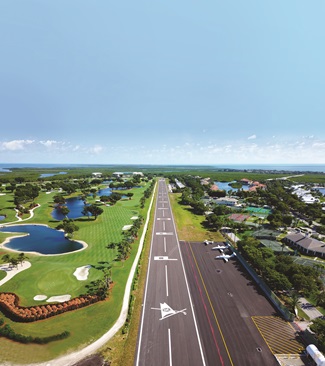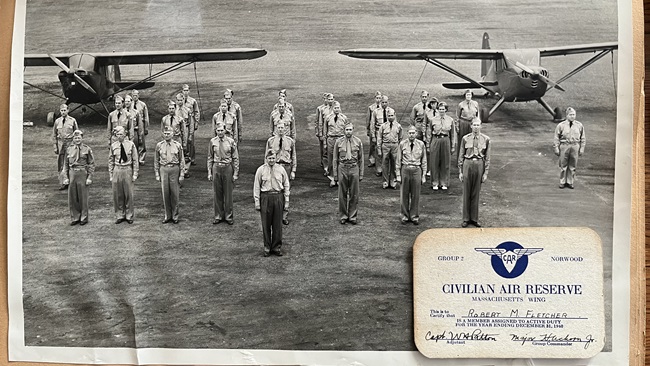Kalamazoo High Flyers Club: Phoenix rising from the ashes
Club nearly closed in 2012
A year ago, things did not look good for Michigan's Kalamazoo High Flyers Club, formed in 1997. The club, based out of Kalamazoo-Battle Creek International Airport, started with 12 members.
“The economic downturn, along with the rising cost of avgas, was a combination that affected pilots’ ability to fly across the nation,” said club President Bhaskar Reddy. “Once flight hours decrease, the need to have monthly club meetings decreases and members tend to lose interest in the group due to the lack of flying-related activities.”
When Reddy joined the nonprofit Kalamazoo High Flyers Club in 2012, he saw it had all the makings of a good organization, with an airworthy flying asset and great pilot members who chose to remain in the club even when they did not fly frequently. “It was a hidden gem. The club structure existed, so minimal work was needed in forming that structure. More time was spent on making improvements and adding on to the existing framework,” he said.
“We repossessed shares from members who were overdue with their monthly dues and set out to fill up our membership pool and start a fresh chapter in the club’s history. We spread the word about the flying club and its attractive low rate of buying in at one-twelfth share of a 1973 Cessna 172M, with monthly fixed cost of $45 and [flying rates of] $20 an hour dry,” said Reddy. “Combine that with the low fuel burn of the Lycoming 320-E2D engine, the total rate for the pilot is around $60 an hour wet, making it the best alternate to owning or renting, both which is well north of this rate.”
Some potential members were skeptical about a 1970s aircraft with low hours on it, said Reddy. “But when I landed from a long crosscountry (KAZO-KFFA-KAZO), we had potential members at the hangar eager to buy in their share and were ready with their checks,” he said. “Our flying club expects members to invest time, so we save on additional costs such as basic maintenance issues permissible by the FARs and bringing in their skill set from their professional work life in helping run the club.”
But as the club tries to keep up with the changing needs of its members, it is looking to add a second aircraft like a Diamond DA40 or Mooney M20J to fulfill its long-range and faster airspeed needs, said Reddy. “We are also open to the option of acquiring an experimental aircraft which reduces the maintenance cost and gives us a greater flexibility in changing the configuration of the aircraft, especially with the ever-changing world of avionics,” he said.
The vision is to keep one aircraft with a low dry rate for short distance flights such as dawn patrols, $100 hamburger runs, pleasure flights, and low-time pilots looking to build hours, said Reddy. “The second aircraft will be relatively faster to the 172 with an upgraded avionics panel, which will answer the long-range and faster airspeed needs.”
The club currently has 12 member pilots with diverse backgrounds and flying experiences, including a student pilot, two CFIIs, three armed forces personnel and five U.S. Air Force Auxiliary members. “Two members are second-generation pilots, one’s father served in WWII for the Army Air corps and another member’s mother was a private pilot during WWII,” said Reddy.
“We look forward to reaching out to other flying clubs and getting to know more local pilots during the off season,” said Reddy. “We have organized fly-ins to different airport restaurants, and the aircraft has been a regular fly-in at Oshkosh for the past few years.”
Reddy had plenty of advice for clubs trying to turn things around. “Induct members who not only want to fly but are passionate enough to be active as club officers, taking on various responsibilities from time to time. The more experienced members can provide vision and direction based on past lessons,” he said.
Nothing keeps a flying club going if you don’t fly, said Reddy. “So get your members to fly so they can enjoy the benefits of the club and also help fund its future,” he said. “The state of health of a club can be assessed by looking at its scheduling website. If you don’t fly often, it defeats the purpose of being in a club.”
Talk to other flying clubs to see what they are doing differently and benefit from that advice, said Reddy. “Shop around for places where you can get competitive rates for maintenance. Some places charge less but the aircraft downtime will be several weeks, since they work on engine overhauls during their off-peak times,” he said. “Hangar flying is just as important as actual flying, especially during off season, as it keeps the spirit going among the group, and creates a sense of camaraderie.”


